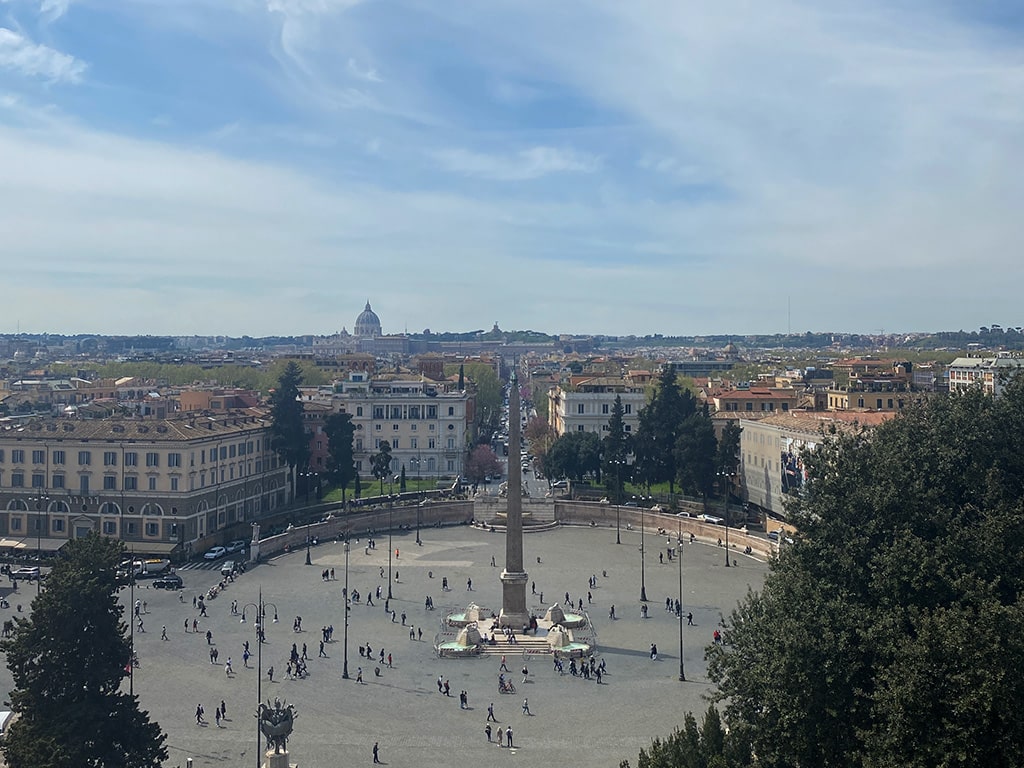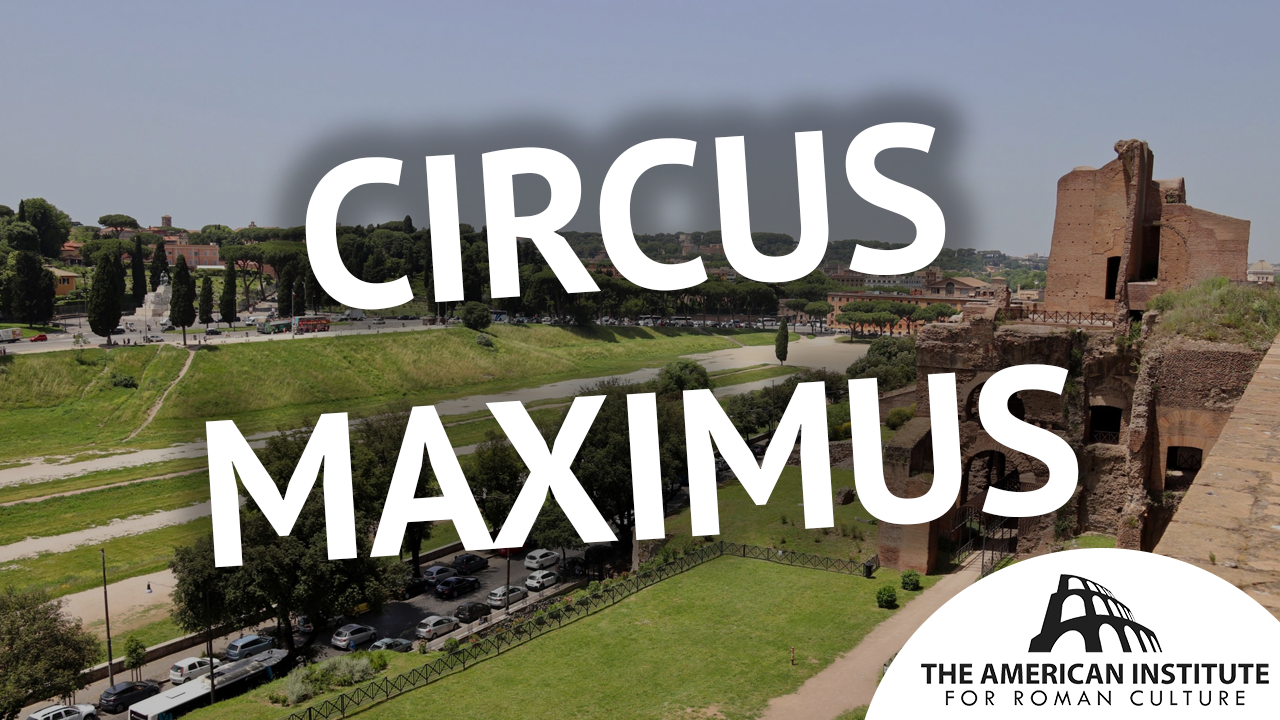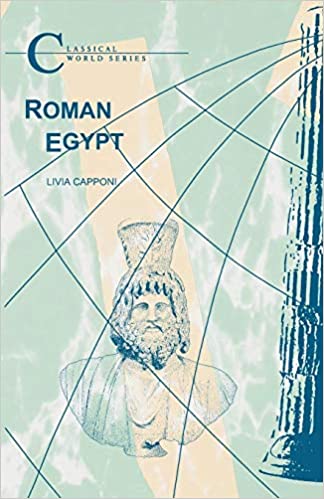Start with our video overview:
The Obelisk of Augustus, also known as the Flaminio obelisk, is located at the center of Piazza del Popolo in Rome. It was built in 1300 BCE by the Pharaoh Seti I, and was erected in the Egyptian city of Heliopolis by his son, Ramesses II. In 10 BCE, the Emperor Augustus brought the obelisk to Rome and installed it at the center of the Circus Maximus. On its base he inscribed: The Emperor Augustus, son of the Divine Caesar, Pontifex Maximus, acclaimed emperor for the twelfth time, and Consul for the eleventh, vested with the power of the Tribune for the fourteenth, gave this obelisk as a gift to the Sun after Egypt had been brought under the power of the Roman people.
The Obelisk of Augustus was carved from red granite in Aswan, Egypt and stands approximately 78.8 feet (24 meters) tall without its base. Of the thirteen obelisks in Rome, it is the third tallest – surpassed only by the Lateran Obelisk and the Vatican Obelisk. These monuments were brought to Rome to project imperial power and lay claim to Egypt’s dynastic legacy.
Obelisks were typically erected in pairs, but the companion to the Obelisk of Augustus has never been identified. It stood in the Circus Maximus until the 6th century CE, when it fell and was buried under debris. When it was finally rediscovered in 1587, it had broken into three sections. Pope Sixtus V ordered its re-erection in the Piazza del Popolo, where it was reassembled and installed under the direction of the architect Domenico Fontana.
To construct the new pedestal, travertine was sourced by demolishing parts of the Septizodium, the monumental nymphaeum built by Emperor Septimius Severus. In the early 19th century, the architect Giuseppe Valadier embellished the obelisk by adding a circular fountain basin and four stone lions at its base.
Bibliography:
Brand, P. (1997). “The ‘Lost’ Obelisks and Colossi of Seti I.” Journal of the American Research Center in Egypt, 34, 101–114. https://www.jstor.org/stable/40000801
Hendrix, David. (2016). “Augustan Obelisk from the Circus Maximus.” The Byzantine Legacy. https://www.thebyzantinelegacy.com/augustan-obelisk
Platner, Samuel. (1929). “Obeliscus Augusti in Circo Maximo.” In A Topographical Dictionary of Ancient Rome (p.367). Retrieved from: https://penelope.uchicago.edu/Thayer/E/Gazetteer/Places/Europe/Italy/Lazio/Roma/Rome/_Texts/PLATOP*/Obeliscus_Circi_Maximi.html
Petroski, H. (2011). “Engineering: Moving Obelisks.” American Scientist, 99(6), 448–452. http://www.jstor.org/stable/23019407
Sorek, Susan. (2010). “The Emperors’ Needles: Egyptian Obelisks and Rome.” Liverpool University Press. https://www.jstor.org/stable/j.ctt5vj9pf
OBELISCUS AUGUSTI IN CIRCO MAXIMO, brought from Heliopolis by Augustus at the same time as the gnomon (v. supra).
Read more:
This is shown by the identical inscriptions on the bases of the two (CIL vi. 701=702). It was dedicated to the Sun (Cassiod. Var. iii. 51. 8, wrongly says that it was dedicated to Luna), and erected on the spina of the circus Maximus (Strabo xvii. 805; Amm. Marcell. xvii. 4. 12; Plin. NH xxxvi. 71; Not. Brev.; Chron. 145). The hieroglyphics on the shaft were cut partly by Seti I and partly by Rameses II, 1292-1325 (Amm. Marcell. xvii. 4. 17-23; BC 1896, 145-173, 250-259=Ob. Eg. 51-90). The height of the obelisk is 23.70 metres (cf. Plin. loc. cit.; Not. Brev.; Chron. 145; CILviii. 212. 83=AL 1552, 83; Jord. ii. 187). Nothing is known of the history of the obelisk after the fourth century until the sixteenth, when fragments of the base and inscription were found during the pontificate of Gregory XIII (1572-1585), and the obelisk itself, broken into three pieces, in 1587. It was then removed and erected on its present site, in the Piazza del Popolo (LS iv. 148-150; HJ 124; BC 1914, 114-115).
This content is brought to you by The American Institute for Roman Culture, a 501(C)3 US Non-Profit Organization.
Please support our mission to aid learning and understanding of ancient Rome through free-to-access content by donating today.
Cite This Page
Cite this page as: Darius Arya, The American Institute for Roman Culture, “Obelisk of Augustus (Circo Maximo, Piazza del Popolo)” Ancient Rome Live. Last modified 05/15/2025. https://ancientromelive.org/obelisk-of-augustus-circo-maximo-piazza-del-popolo/
License
Created by The American Institute of Roman Culture, published on 05/15/2025 under the following license: Creative Commons: Attribution-NonCommercial-ShareAlike. This license lets others remix, tweak, and build upon this content non-commercially, as long as they credit the author and license their new creations under the identical terms. Please note that content linked from this page may have different licensing terms.







